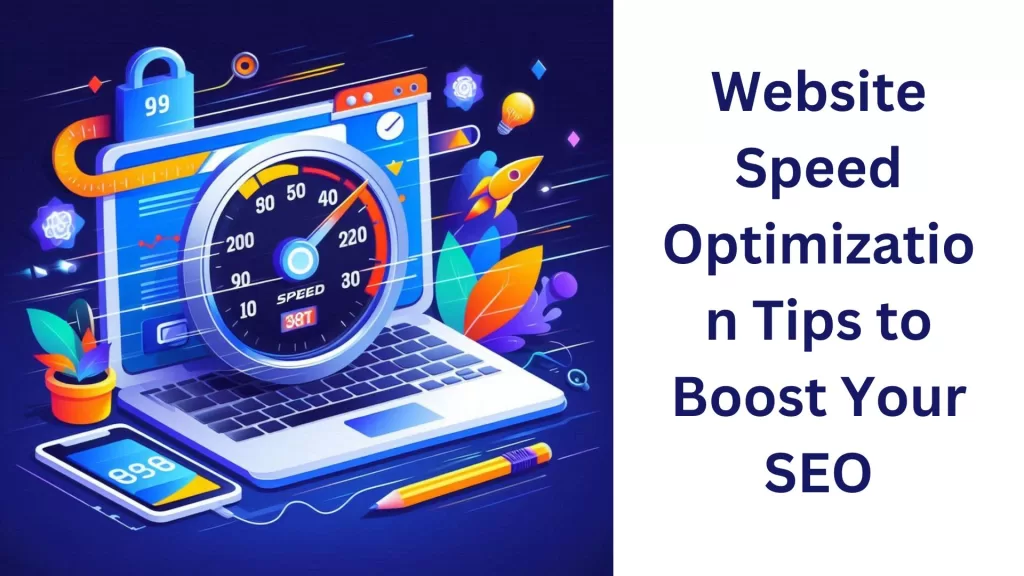Introduction
In the digital landscape, speed is crucial. A fast-loading website not only enhances user experience but also significantly impacts your search engine optimization (SEO) efforts. In an age where attention spans are shorter than ever, even a one-second delay can lead to increased bounce rates and lost potential customers. According to Google, a website that loads within five seconds is likely to retain 70% of its visitors, while a site that takes ten seconds to load only retains 50%. Therefore, optimizing your website speed is imperative for improving both user experience and SEO rankings.
In this “Website Speed Optimization Tips to Boost Your SEO Rankings” article, we will explore various strategies and techniques to optimize your website speed effectively. From image compression to leveraging browser caching, we’ll provide you with the tools you need to ensure your website performs at its best.
1. Understanding the Importance of Website Speed
Before diving into optimization techniques, it’s essential to understand why website speed matters. Here are a few key reasons:
- User Experience: Users expect a fast-loading website. If your site takes too long to load, visitors are likely to leave before they even see what you have to offer. A smooth, quick experience keeps users engaged and encourages them to explore your content.
- SEO Rankings: Google uses site speed as one of its ranking factors. Faster websites are more likely to rank higher in search results. In fact, a study by Google found that sites that load in under three seconds see a 32% increase in conversion rates.
- Mobile Performance: With the rise of mobile browsing, optimizing for speed is even more critical. Mobile users are often on slower networks, and a quick-loading site can make a significant difference in their experience.
2. Measuring Your Current Speed
Before you can optimize your website speed, you need to measure it. Various tools can help you analyze your current load times:
- Google PageSpeed Insights: This tool provides insights into your website’s speed and offers suggestions for improvement. It evaluates your site on both mobile and desktop devices, giving you a comprehensive view of performance.
- GTmetrix: GTmetrix offers detailed performance reports, including page load time, total page size, and the number of requests made by your site. It also provides recommendations for optimization.
- Pingdom: Pingdom allows you to test your site’s speed from different locations around the world, helping you understand how your site performs globally.
3. Optimizing Images
Images can be a significant contributor to slow loading times. Here are some tips to optimize images effectively:
- Compress Images: Use image compression tools like TinyPNG or JPEGmini to reduce file sizes without sacrificing quality. Aim for a balance between quality and size to ensure your images load quickly.
- Use Appropriate Formats: Choose the right file format for your images. For photographs, use JPEG; for graphics with transparency, use PNG; and for animations, consider GIF or APNG.
- Implement Responsive Images: Use the
srcsetattribute to serve different image sizes based on the user’s device. This ensures that mobile users receive smaller images, reducing load times. - Lazy Loading: Implement lazy loading to defer loading images that are not immediately visible on the screen. This technique improves initial load times, as only images in the viewport are loaded.
4. Minifying CSS and JavaScript
Minifying your CSS and JavaScript files reduces file sizes and speeds up loading times. Here’s how to do it:
- Remove Unnecessary Characters: Minification involves removing whitespace, comments, and unnecessary characters from your code. Tools like UglifyJS for JavaScript and CSSNano for CSS can automate this process.
- Combine Files: Reduce the number of HTTP requests by combining multiple CSS and JavaScript files into a single file. Fewer requests mean faster loading times.
- Asynchronous Loading: Load JavaScript files asynchronously using the
asyncordeferattributes. This prevents scripts from blocking the rendering of the page and improves loading speed.
5. Leveraging Browser Caching
Browser caching allows you to store static files on a user’s device, reducing load times on subsequent visits. Here’s how to leverage it:
- Set Cache-Control Headers: Use
Cache-ControlandExpiresheaders to specify how long browsers should cache your files. This ensures that repeat visitors don’t have to download the same resources again. - Utilize a Content Delivery Network (CDN): CDNs store copies of your website’s static files across multiple servers worldwide. When users visit your site, they’re served content from the closest server, improving load times.
6. Reducing Server Response Time
Server response time is crucial for overall site speed. Here are some strategies to improve it:
- Choose a Reliable Hosting Provider: Your hosting provider can significantly impact your website’s speed. Consider upgrading to a dedicated server or a Virtual Private Server (VPS) if you’re currently on shared hosting.
- Optimize Your Database: Regularly clean up your database by removing unnecessary data such as spam comments, post revisions, and unused plugins. Use tools like WP-Optimize or phpMyAdmin to help with this task.
- Use HTTP/2: If your server supports it, switch to HTTP/2. This protocol allows multiple requests to be sent over a single connection, reducing load times.
7. Implementing Content Delivery Networks (CDNs)
As mentioned earlier, CDNs are essential for reducing loading times. Here’s a deeper look at their benefits:
- Faster Load Times: CDNs distribute your content across various global servers, ensuring that users access your site from the nearest location.
- Improved Scalability: During traffic spikes, CDNs can handle increased loads more efficiently than your primary server, ensuring your site remains accessible.
- Enhanced Security: Many CDNs provide additional security features, such as DDoS protection and SSL certificates, which further improve your site’s performance and reliability.
8. Optimizing Code and Plugins
Your website’s code and plugins can impact speed. Here are some tips for optimization:
- Limit Plugins: Use only essential plugins to reduce bloat. Uninstall any plugins that you don’t actively use, as they can slow down your site.
- Choose Lightweight Themes: Opt for a lightweight, well-coded theme that prioritizes speed. Avoid themes with excessive features that you won’t use.
- Optimize Your Code: Ensure that your code is clean and efficient. Review your HTML, CSS, and JavaScript for any unnecessary elements that could be removed or simplified.
9. Monitoring Performance Regularly
After implementing speed optimization techniques, it’s essential to monitor your site regularly. Here’s how:
- Use Performance Monitoring Tools: Regularly check your website speed using tools like Google PageSpeed Insights, GTmetrix, or Pingdom to ensure it remains optimized.
- Set Performance Benchmarks: Establish performance benchmarks and track your website’s loading times over time. This will help you identify any dips in performance and address them promptly.
- Stay Updated: Keep your CMS, themes, and plugins updated to ensure you’re benefiting from the latest speed enhancements and security features.
10. Conducting Regular Audits
Finally, conducting regular audits can help you maintain optimal performance:
- Website Audits: Schedule regular website audits to identify areas for improvement. This includes checking for broken links, outdated content, and optimization opportunities.
- User Feedback: Encourage user feedback regarding website speed and performance. This can provide valuable insights into areas that may need further attention.
Conclusion
Website speed optimization is a vital aspect of SEO and user experience. By implementing the strategies outlined in this article, you can significantly improve your website’s loading times, enhance user satisfaction, and boost your search engine rankings.
From compressing images to leveraging browser caching and using CDNs, these techniques will help you create a fast, responsive website that meets the demands of today’s online users. Regular monitoring and audits will ensure your website remains optimized, allowing your small business to thrive in a competitive digital landscape.




